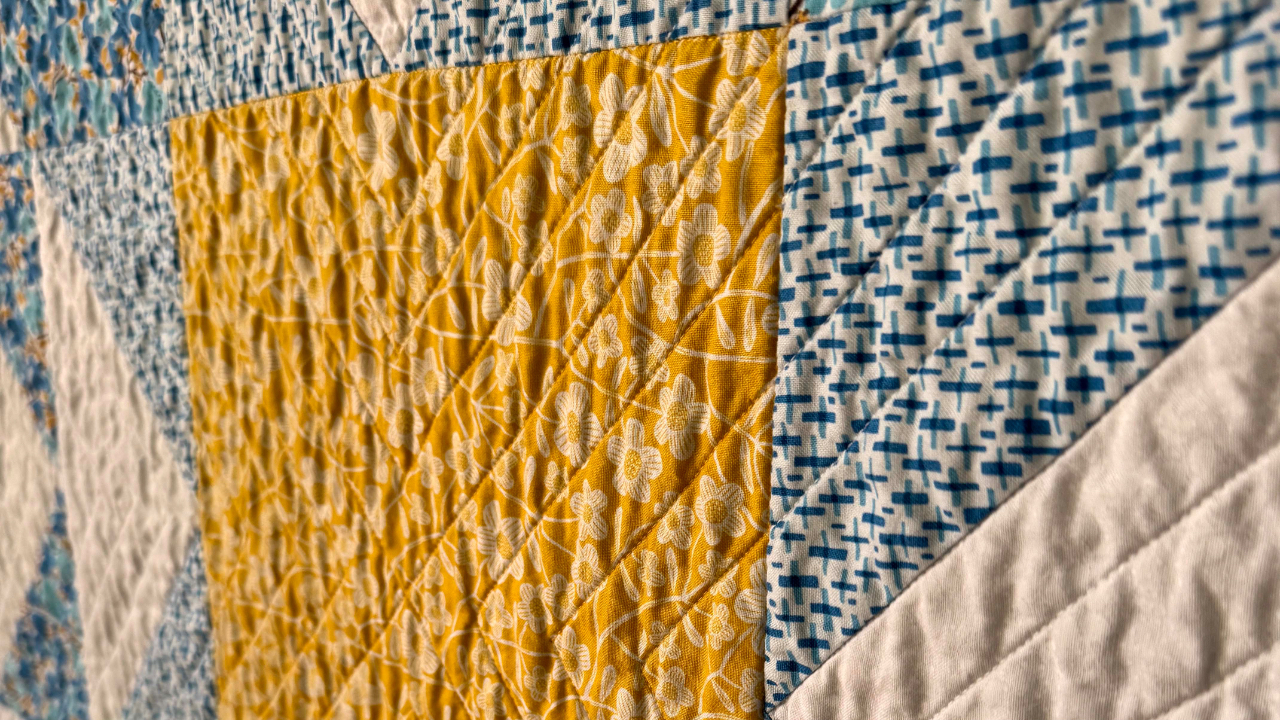
Updated July 6, 2025
Have you heard about free motion quilting, or FMQ? I'm sure you've seen it if you've ever admired seemingly complex designs in someone's quilting. At its most technical, free motion quilting is stitching through the layers of a quilt on a domestic sewing machine with the feed dogs disengaged. I find this definition... less than helpful... if you're really trying to learn something. So I broke it down into its parts to help you learn about FMQ in a Q&A format. Buckle up, friends!
Q: What is a feed dog, and why is it called that?
A: Feed dogs are the metal teeth below the presser foot. They move up and down in a circular motion. The teeth grip your fabric, and this movement helps feed the fabric through in a straight line. Disengaging the feed dogs lets you move your quilt freely in any direction while the needle stays in place. As far as I know, they're called feed dogs because of their teeth.

Q: How do I create designs with thread using free motion quilting?
A: Moving your quilt in a specific direction or a series of directions creates the thread design. Here's the August quilt by Elizabeth Hartman that I'm working on right now. I quilted the straight lines with my walking foot and then switched to free motion. Moving my quilt in a circular motion as I travel down the row is what creates the pebble motif you see here.

Q: Is free motion quilting possible on my domestic sewing machine?
A: Yes! As long as you can disengage your feed dogs and attach a darning foot, you can do FMQ on the sewing machine you already own. Check your machine's manual to learn how to disengage the feed dogs and which darning foot they recommend.
Q: Darning foot? Now it just sounds like you're making stuff up!
A: Seriously, that's what it's called! The darning foot hovers over your fabric instead of pressing down on it like a regular presser foot. Here's the one that came with my machine. Notice the spring? That's what helps the foot bounce off your fabric, allowing you to move it freely.

Q: How can I learn different designs?
A: Doodling is your friend here. Practicing designs with pen and paper first helps your muscles build memory, so it feels more natural when you start using your machine. If you're ever in a meeting that could have been an email or binge-watching Netflix, grab a pen and paper and start doodling. I like to use a lined journal when I doodle. You'll want some designs to keep a consistent height, and the lines help me ensure my practice stays on point.

Q: I'm worried I'll mess up once I get to my sewing machine. How can I get past that?
A: I really love practice sandwiches for this reason. A practice sandwich is about 18 x 20 inches, or a fat quarter-sized piece of inexpensive fabric and scrap batting used to make a mini quilt sandwich. I keep one next to my sewing machine at all times. It's a great way to practice a motif before doing it "for real," and it also helps you ensure there are no tension issues before you start.

Q: Where should I begin quilting?
A: It depends on how you basted your quilt. If you used safety pins to baste, start in the center and work your way out. When someone is pin-basting, I usually recommend they stitch in the ditch (beginning in the center) to help stabilize the quilt even more. At that point, you can start your free motion quilting anywhere you'd like. If you used a basting spray, you can start anywhere. I use basting spray, and I usually work from one side to the other.
I hope you found this helpful and are ready to begin free motion quilting. The opportunities that emerge as you learn and practice are amazing and will elevate your craft to the next level.






